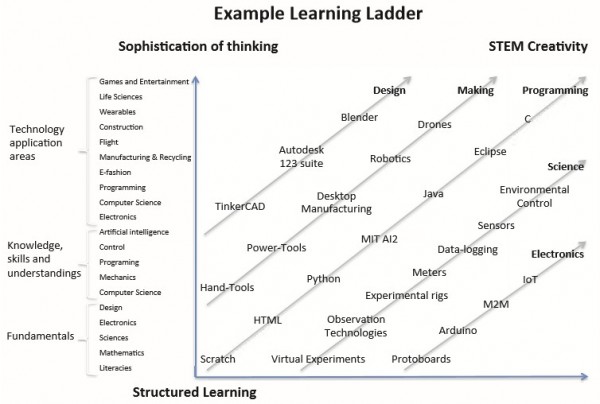Coding & STEAM – A Framework for Thinking
- On 03-02-2016
The Influence of a Framework for Thinking
When I was 15 I changed the sport I played. I left playing junior football and began umpiring it – which was odd given that I didn’t like running long distance all that much! I think I didn’t want to lose the feeling of being part of a community and participating with a team. Being an umpire was certainly a growing experience for me as a young adult – especially when I had to deal with the comments being made by parents on the sidelines.
Looking back now, however, it wasn’t umpiring per se that made the biggest difference for me for the direction of my life. At one of the weekly team coaching meetings I happened to sit next to another young umpire who had just bought himself a smallish personal computer. I was fascinated. I asked lots of questions. I talked to him about what he did with it – how did he program it? This happenstance meeting sparked my interest in the world of computing and the thinking that being able to code required. By the time I was 16 I had bought my first computer, mainly from the money I had saved up from umpiring. The year was 1982.
That moment influenced my career decisions. It led to me to gaining Science and Engineering degrees with majors in Computer Science, Maths and Mechanical Engineering. My PhD blended all three disciplines to create a program to speed up the analysis of dynamic stresses in structures. I even ended up teaching Aerospace Engineering.
What I learnt
Along the way the 3 disciplines taught me a specific way of thinking – every problem has a solution and there is a process one goes through to figure it out. This is what design thinking is all about and what Coding and STEAM aim to do within a school context. The design thinking framework outlines a simple process and consistent language that can be use in every classroom to develop students to be self-regulated learners. Along the way students will develop skills such as resilience, problem solving, questioning, creativity and critical thinking – because there is a solution out there and they will need these skills to figure it out. It is a key thinking framework increasingly being used to adapt to a rapidly changing world.
The challenge most schools face is that they perceive STEM / STEAM and Coding as something separate TO DO. It can be but that is doing it the hard way. The best way to begin is by infusing design thinking and STEAM / Coding approaches into your current lessons. This is what attracted us to working with Mike Lloyd and the way he presents STEAM and Coding within schools. You get to plan for a progressive infusion into your learning areas and discover how you can practically enact STEAM and Coding gradually and progressively through the years – both primary and secondary. One feature is to spark student interest and create those transformational moments much like I experienced all those years ago.
If you haven’t yet booked into the March Workshops we are running in Brisbane, Ipswich, Melbourne, Geelong, Ballarat or Perth


0 Comments